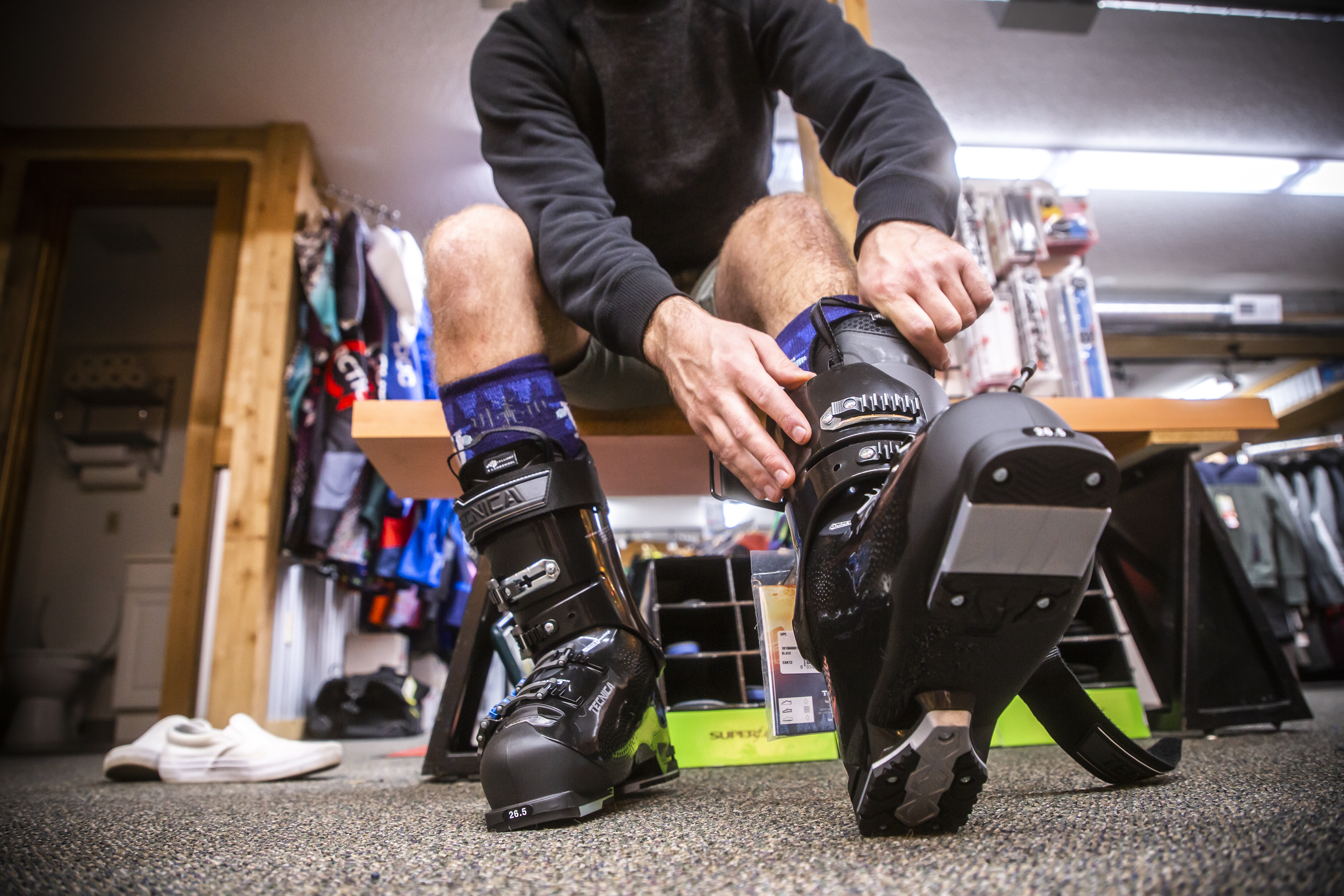Choosing the proper boot can be very tricky. Not only are there almost too many options to choose from, but most of us do not know where to start. What makes it even harder is that we are looking for that mysterious "glass slipper". We want our boot to be easy to put on, and something that is comfortable all day. This is why it is important to take our time with the process. Don't rush through it, and make sure you are happy with how the boot fits.
Now, as convenient as it may be to take your shoe off, and glance at the slightly worn out size label, this is not the best way to pick a ski boot. We highly encourage everyone to go to a certified bootfitter for the most accurate measuring and bootfitting. We also understand that not everyone has a reputable boot fitter where they live, so here is a roadmap of steps to help you understand what you may be looking at:
1. Measure your foot.
- Measure your foot from the heel to the tip of your longest toe.
- Do this in centimeters as ski boots are measured in Mondo Point (centimeters).
- Measure the forefoot of your foot.
- This measurement is taken at the "knuckles" of your toes and gives you a good idea of how wide your foot is. This is done in mm.
- For a more accurate measurement, you can wrap a string all the way around your foot and measure that.
- This is done in cm as well, and you should get something close to the length of your foot. If it is smaller, then you know you have a narrow foot for your given length. If it is longer than your foot length then you know you have a wide foot for your length.
2. Understanding Sizing
- Most ski boots are made in every half size.
- Meaning most companies only offer a 23.5, 24.5, 25.5 and so on. Rather than offering a 23.5, 24.0, 24.5.
- It is encouraged to stay as close to your exact length rather than sizing up.
- Ski boot sizing is tighter than your street shoes.
- Ski boots should, and will, feel tighter or smaller than your street shoes. If you fit your boots like your street shoes, you will have a hard time controlling your skis, and in some cases, keeping your foot in one spot inside the boot.
- The width of ski boots is referred to as the "LAST"
- 92mm: Very narrow foot. For the most part offered solely in race boots
- 96-98mm: Narrow fit. Most commonly referred to as a low volume fit.
- 100mm: The most average width. Think of this as the standard shape, and if you feel you need to go up or down you can move from here.
- 102mm: Wide fit. For those people who have pressure on the sides of the feet.
- 106mm: Extra Wide. For very wide feet.
3. Deciding on the flex
- The flex of a boot is a reference on how stiff or soft the boot is. This helps determine the levels of skiers or body shape of the skier that should be using the boots
- 60-90 flex boots usually indicate a beginner level boot for men, and 60-75 indicate the same for women's boots.
- 90-110 flex boots usually indicate the boot is for an intermediate level skier. The range for women's boots is usually 75-90.
- 110 and higher for men, and 90 and higher for women are usually indicating the boot is for advanced level skiers
- Anything 140-150 usually means that this person is the highest level skier on the planet and they probably compete on the World Cup Circuit of sorts. In other words their shins are made of steel and they ski extremely fast.
- One other key thing to keep in mind is that the flex index is not an official metric. The flex indexes are very subjective and can even vary within the same company.
- Ex. You try on a 100 flex boot from Atomic and it was too stiff, that does not mean that a boot from Lange will also be too stiff. try on lots of boots!
4. Where do you ski? Skiing Style.
- Now depending on where you ski or what your style is like, boots are tweaked for this.
- If you ski in the park, your probably after a softer flexing boot that allows you to get over your skis more, and allows you to tweak various grabs and tricks with ease. These boots also commonly feature a cushion foot board for impact absorption.
- If you are looking at an alpine touring boot, these boots are naturally softer than what their flex indexes indicate. This is to keep the boots as light as possible.
5. Purchased!
- Once you purchase your boots we highly encourage someone to wear them for a couple different sessions just around the house. This is an effort to get the boot to start the break in period even before we have hit the slopes.
- If irritations with the boot continue, bring the boots into a specialized bootfitter (like ourselves!) and they will be able to help you with the next steps!
|

